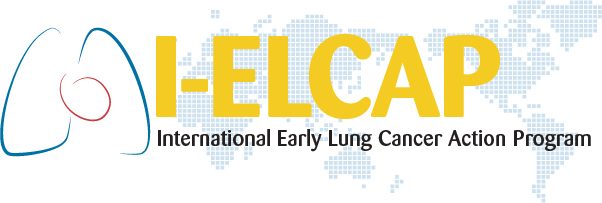Previous Meetings
The 11th International Conference on Screening for Lung Cancer
Friday, October 15, 2004 to Sunday, October 17, 2004
Instituto Patristico Augustinianum Via Paolo VI, 25 – 00193
Rome
Italy
Agenda: 11th Conference Agenda
Mission:
The broadest mission of these Conferences is the collective pursuit of avant-garde understanding of the issues surrounding screening for lung cancer, the broadest subissues being early diagnosis and early intervention. Any given Conference focuses on issues that are particularly topical at the time. As always, the Conference will provide an update of research on and practice of screening for lung cancer, including updates of I-ELCAP protocols and interim results of research.
The Tenth Conference focused on the results on the diagnostic performance of the I-ELCAP protocol for CT screening and introduced the topic of what can be said about it to people asking their physicians for advice about CT screening for lung cancer; that is, about the likelihood that a particular round of screening would detect cancer in him/her, the likelihood that early intervention could cure such a cancer, and that (s)he would avoid death from another cause for a decade or whatever period. The Eleventh Conference will continue to focus on the latter topic and on alternatives to resection in early intervention, also addressed in previous conferences.
Consensus Statement:
This conference again addressed the two broad missions of these conferences — advancement policy-relevant research on early diagnosis of lung cancer and translation of up-to-date understandings into guidelines for practice based on the accumulated evidence of the International Early Lung Cancer Action Program (I-ELCAP) consortium. Though different entry criteria were used at each participating institution, the use of a common regimen of screening allowed the data on about 27,000 participants with baseline and over 16,000 repeat screenings to be pooled. To date, these screenings have resulted in more than 400 diagnosed cases of lung cancer. Almost all of the diagnosed cases have been screen- rather than interim-diagnosed, over 80% had no identifiable lymph-node involvement, and the median diameter has been 15 mm on the baseline screening and less than 10 mm on repeat screenings. While the 10th Conference had focused on the diagnostic distribution achieved under the screening regimen, the 11th Conference focused on ‘overdiagnosis,’ and on what can now be said to individuals asking their physician for advice about CT screening for lung cancer. The 12th Conference will focus on the overall results of I-ELCAP to date and also on corresponding Japanese results outside of I-ELCAP.
The concepts of ‘overdiagnosis’ were explored in prior conferences. The questions to be addressed were identified to be these: 1) what proportion of the screen-diagnosed cases are so slow-growing as to be effectively benign, and 2) what proportion of the screenees die early of causes other than lung cancer and thus do not experience the full benefit of screening.
The first question has been addressed in several different ways. First, all diagnoses of lung cancer have been reviewed by the I-ELCAP Expert Pathology Panel chaired by D. Carter, its other members being E. Brambilla, A. Gazdar, M. Noguchi, and W. Travis. This panel concluded that all cases were genuine lung cancers, representing the full spectrum of histologic diagnoses. Further efforts in identifying the characteristics of these early lung cancers have focused on CT characteristics of nodule consistency (solid, part-solid, nonsolid) and growth, and slow-growing cancers were identified in solid nodules (e.g., carcinoid) less frequently than in part-solid and most frequently in nonsolid ones, though with the caution that determination of growth in nonsolid nodules is uncertain. Overall, effectively benign slow- growing lung cancer may represent up to 15% of all cases diagnosed in the baseline cycle of screening, the percentage being much lower on annual repeat screening. Biomarkers of ‘aggressiveness’ of early lung cancers are being investigated by the European Consortium for Early Lung Cancer Detection, National Cancer Institute, and Specialized Programs of Research Excellence (SPORE) in lung cancer at Vanderbilt, and the preliminary evidence indicates that these cancers are characterized by the same biomarker spectrum as are lung cancers in general. Follow-up of cases in which treatment is delayed or refused is ongoing, and preliminary evidence indicates that all progress in size and in stage also.
To address mortality from competing causes of death, data on about 5,000 screenees who began to be enrolled in the CT screening for lung cancer program in New York City as early as 1993 were presented. The data showed the overall 10-year death rate from all causes other than lung cancer to be 7% in those who were 75 years of age or younger at the time of enrollment, and 11% for those over 75 years of age; the particulars depend on age and pack-years of smoking as those who smoked for less than 60 pack-years had lower rates than these.
Among other issues, the Conference also considered the results of PET scanning for one. Given nodule growth, it evidently is useful in confirming malignancy; but all those with a negative PET result required further follow-up with CT, as malignancies were subsequently diagnosed among these. Emerging alternatives to lobectomy were discussed, including limited resection and radiation therapy. The workshops continued the development of I-ELCAP case teaching files, both for learning and self-assessment, and of research concerning smoking and screening behavior and non-surgical interventions. The possibility of providing information on coronary artery calcification from the low-dose CT scans for lung cancer was discussed, though not conclusively. Scientific presentations included presentations on results of the I-ELCAP member screening trials as well as other trials, including the Dutch-Belgian trial, novel interventions and methods of localizing these small nodules, and biomarker results. Several of these will be published in Clinical Imaging.
